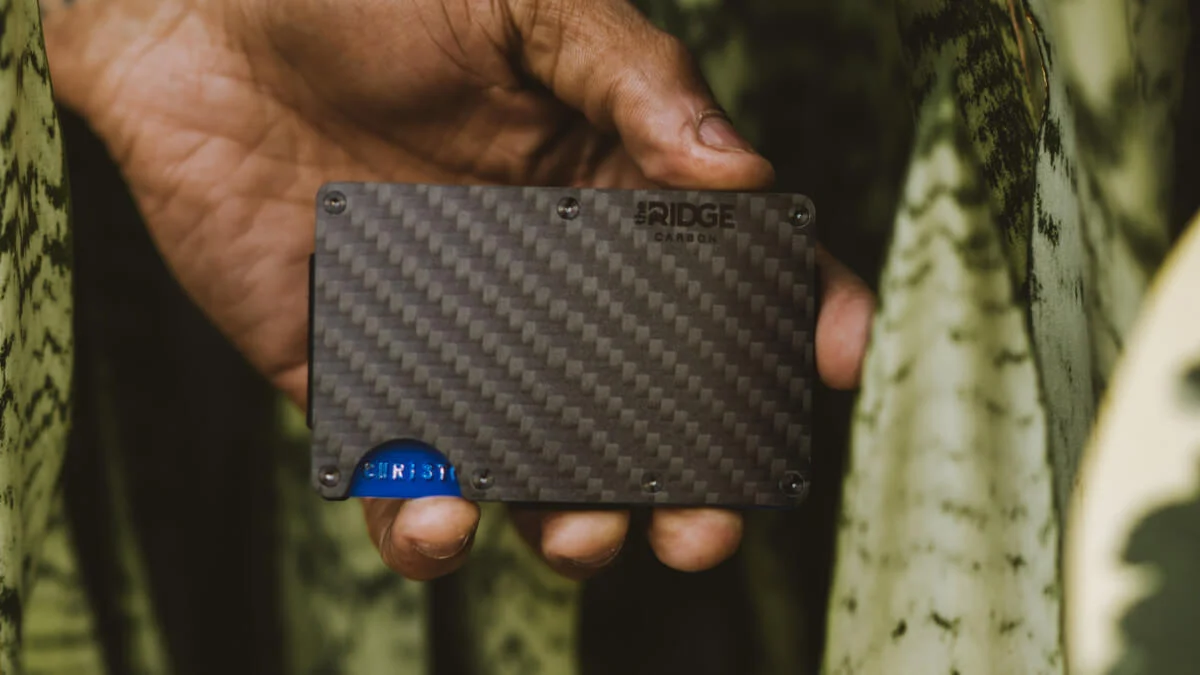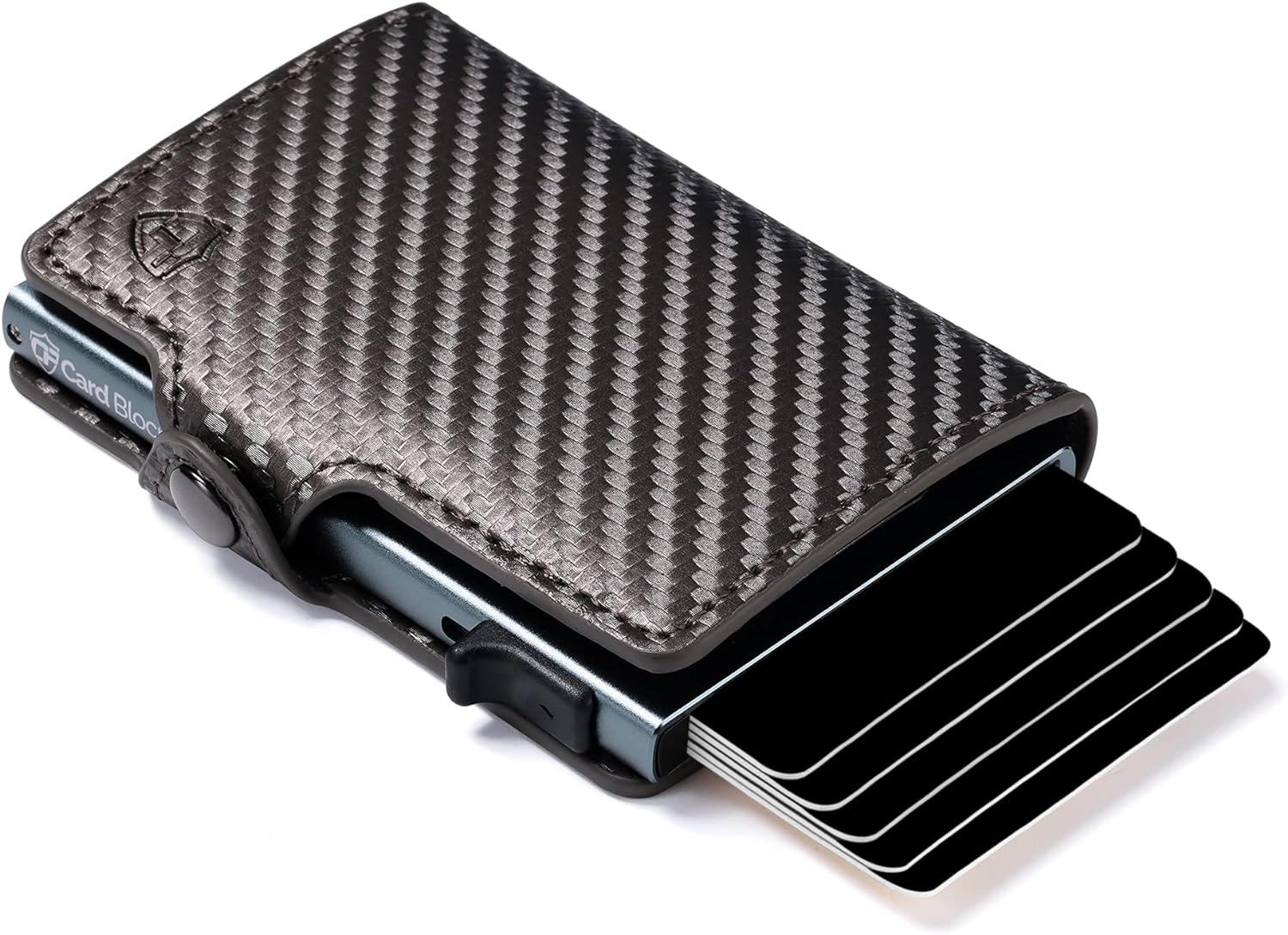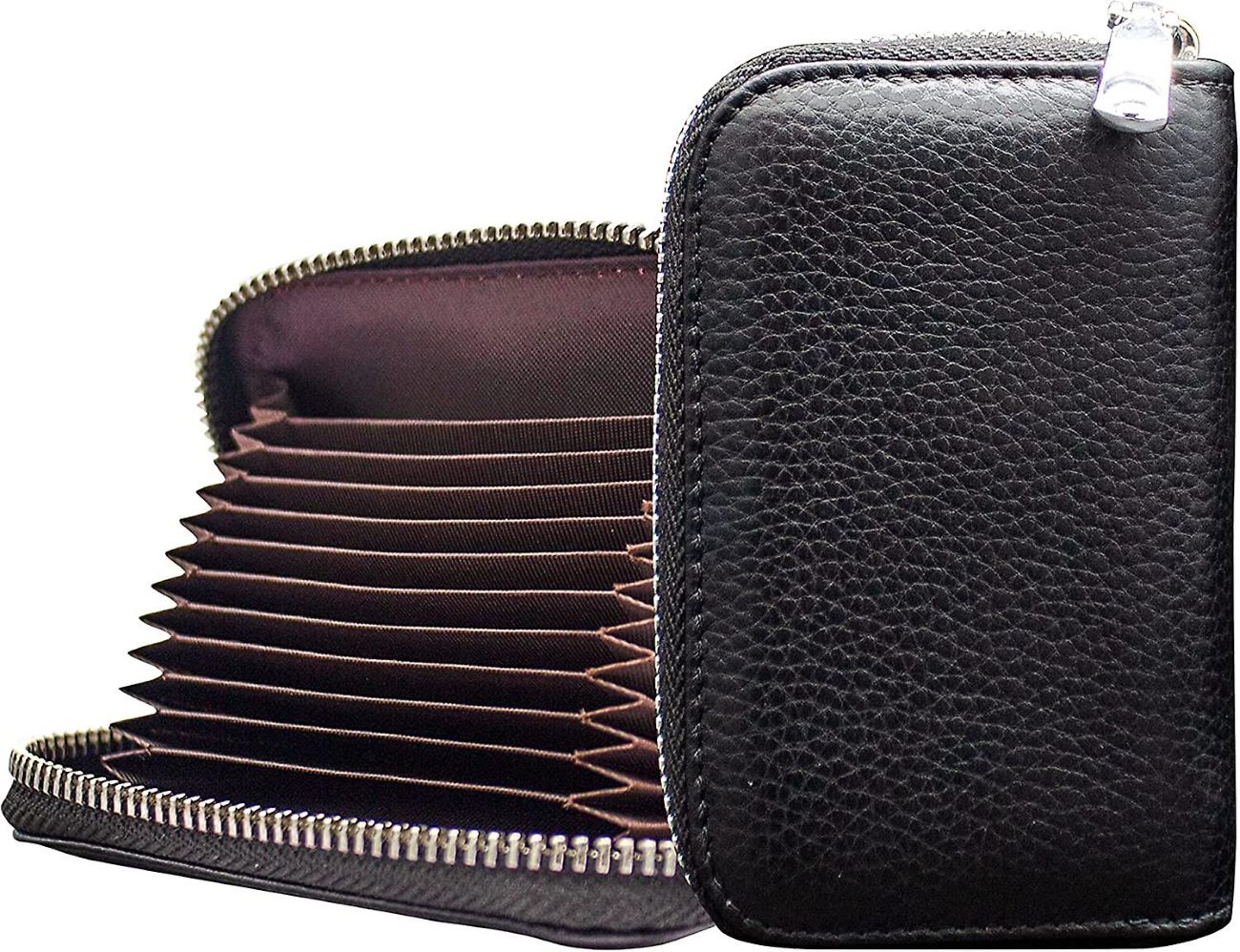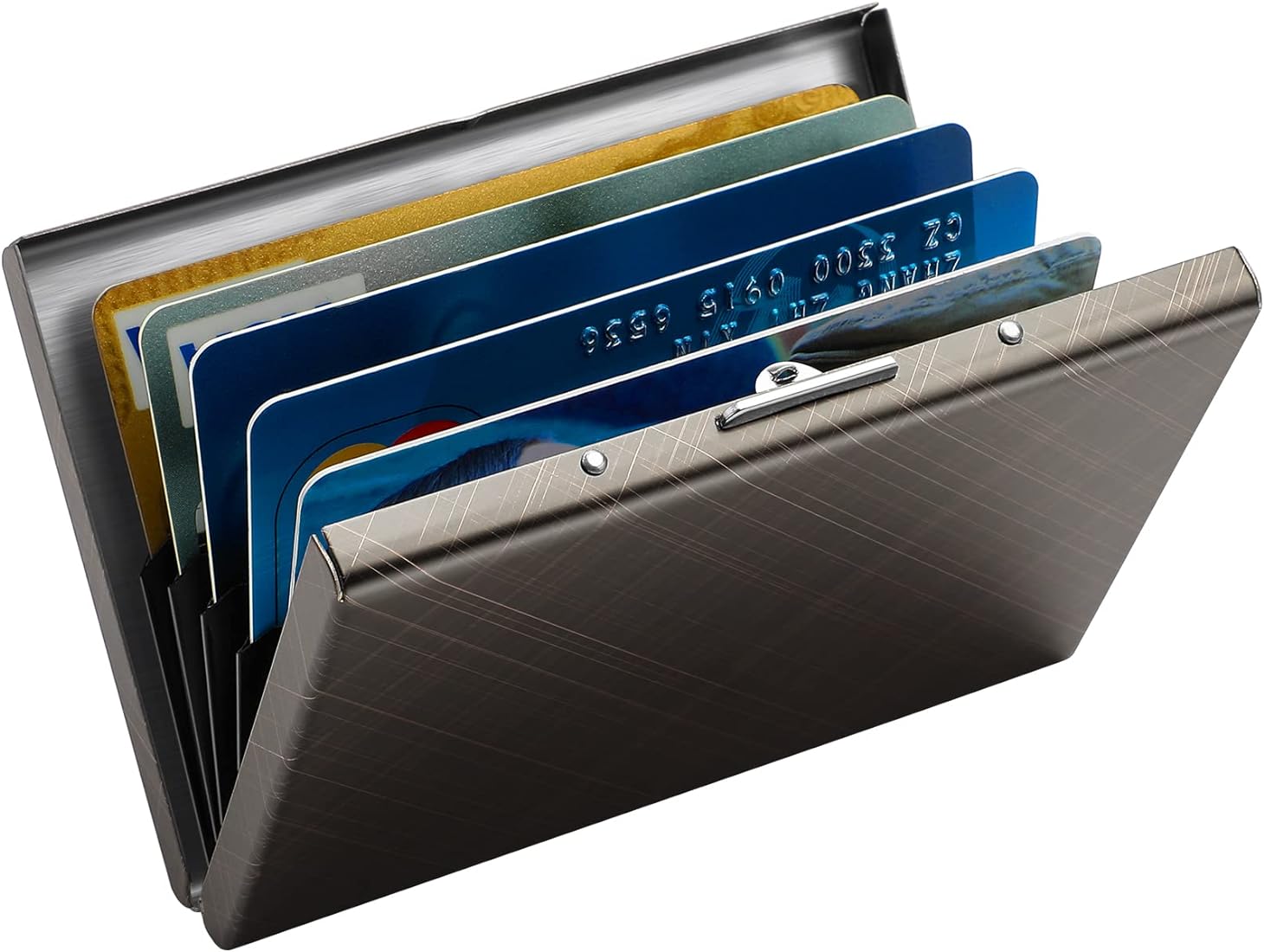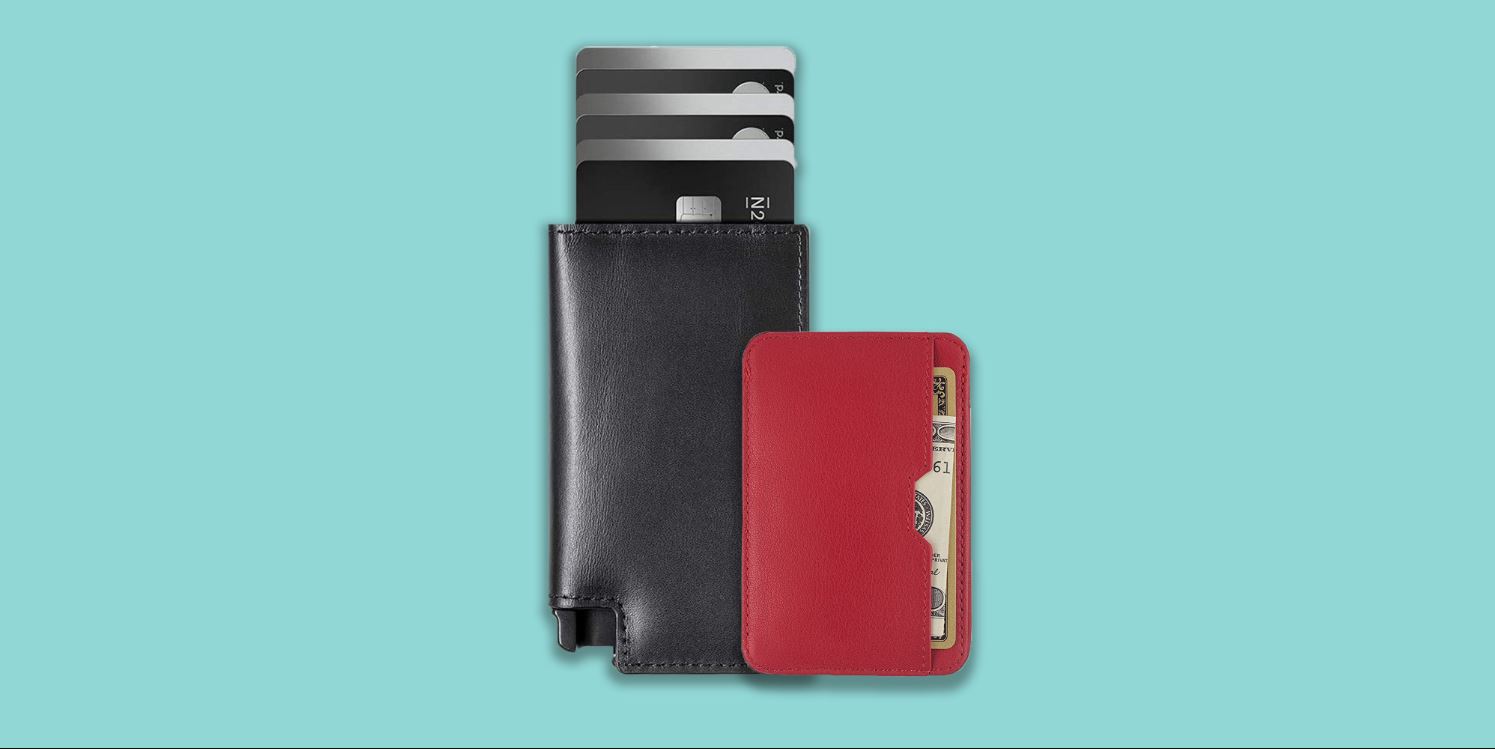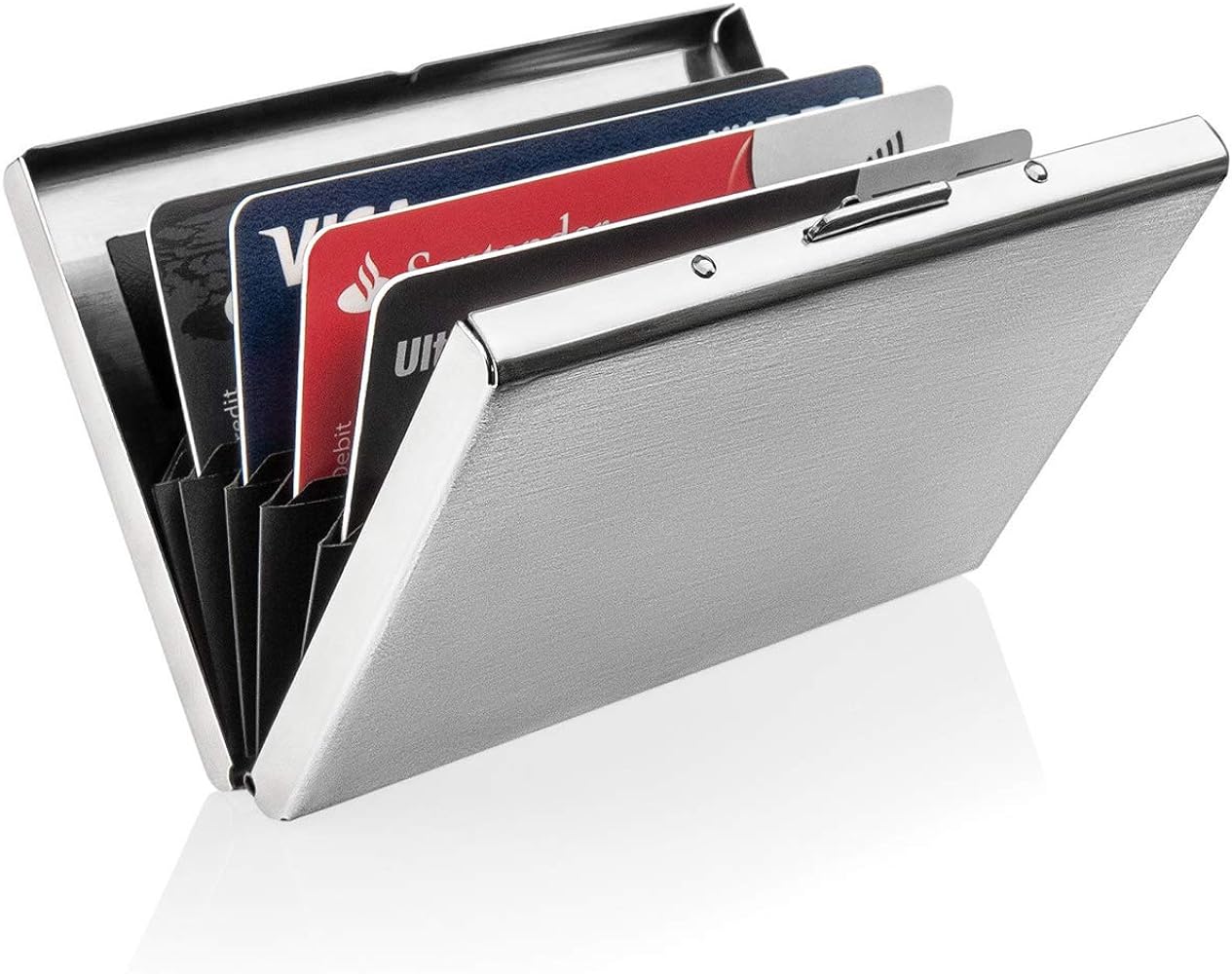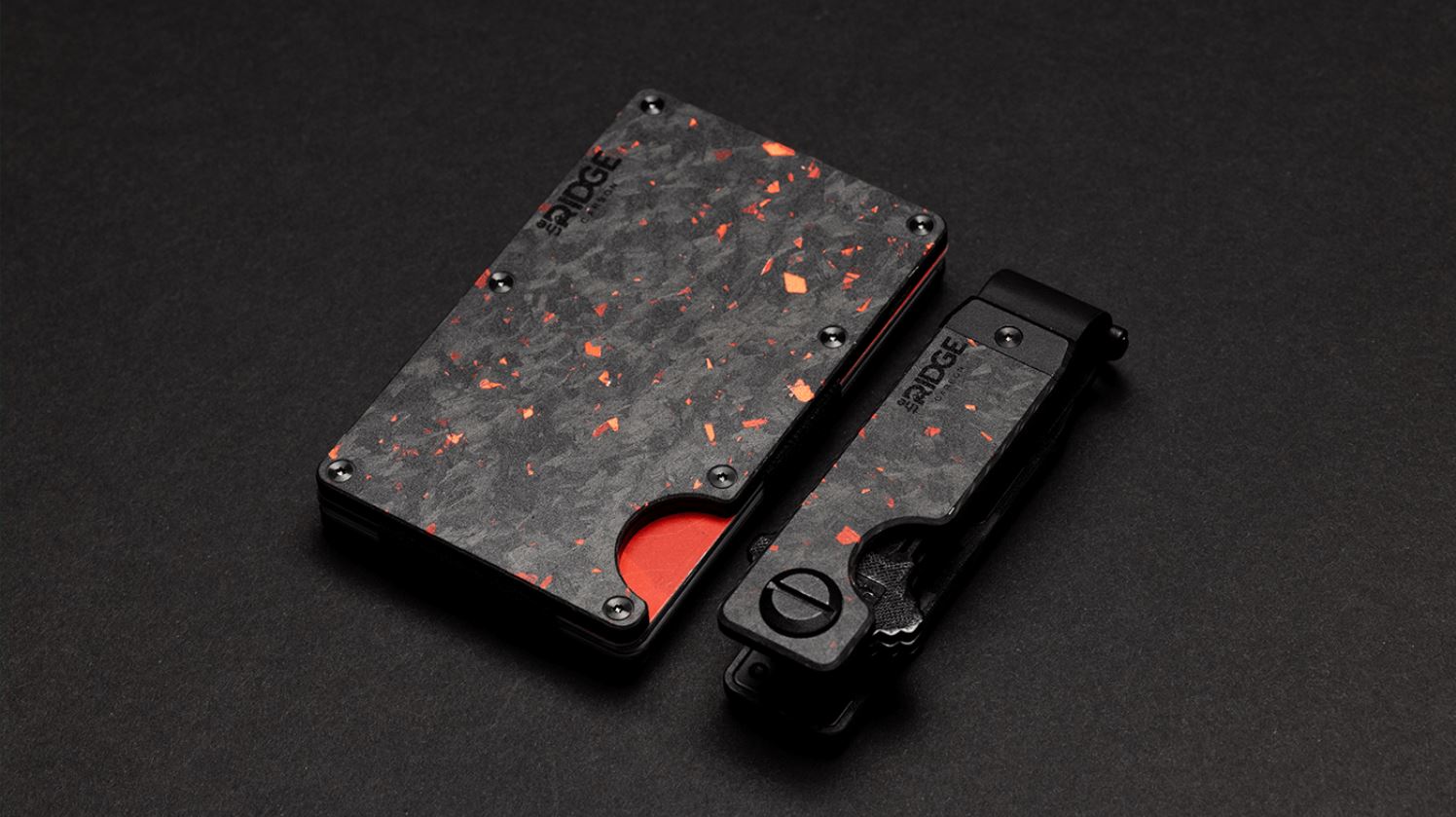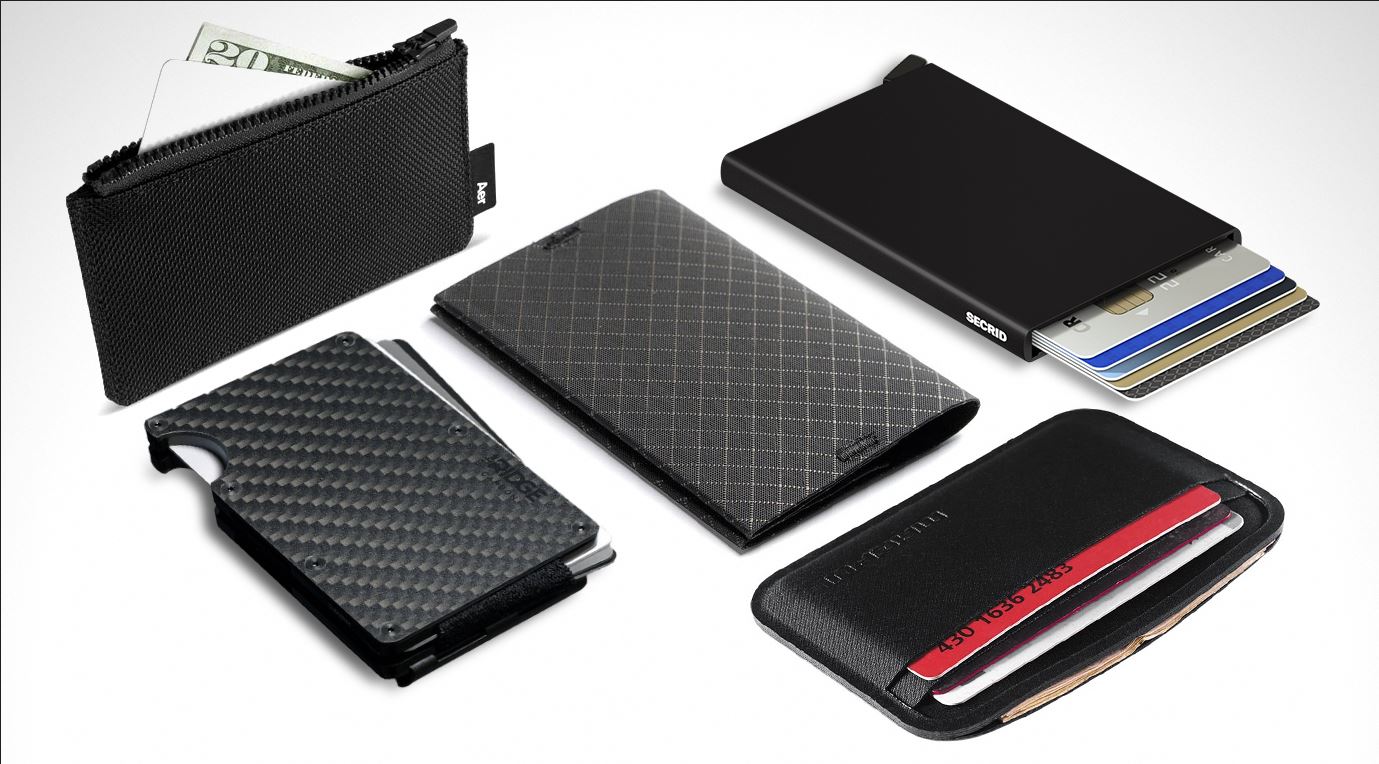Introduction
RFID, which stands for Radio Frequency Identification, is a technology that uses electromagnetic fields to automatically identify and track objects. It has gained popularity in various industries due to its ability to provide real-time tracking and improved inventory management. However, with the convenience that RFID offers, there also comes potential risks, particularly in relation to privacy and security.
As RFID technology becomes more prevalent, concerns have been raised about the unauthorized scanning and theft of personal information. This is where RFID blocking comes into play. RFID blocking refers to the use of specialized products or materials that aim to prevent the unauthorized reading of RFID-enabled cards, passports, and other items.
In this article, we will explore the concept of RFID blocking, how it works, and its benefits and limitations. We will also address common misconceptions about RFID blocking and help you determine whether you need RFID blocking products to safeguard your personal information.
Understanding RFID blocking is crucial in this era of increasing digital threats. By the end of this article, you will have a clear understanding of what RFID blocking is, how it can protect you, and whether it is a necessary precaution in your daily life.
What is RFID?
RFID, or Radio Frequency Identification, is a technology that uses radio waves to identify and track objects. It consists of two main components: a tag or transponder and a reader. The tag contains a microchip that stores data and an antenna that communicates with the reader. The reader emits radio waves and collects the information transmitted by the tags.
RFID technology enables automatic and contactless identification of objects, making it a valuable tool in various industries. Unlike traditional barcode systems that require line-of-sight scanning, RFID tags can be read from a distance, even if they are not in the direct line of sight of the reader. This feature allows for efficient and accurate inventory management, supply chain tracking, and access control.
RFID technology is used across a wide range of applications, including retail, logistics, healthcare, and transportation. In retail, RFID tags can be attached to products for efficient inventory management, reducing the need for manual stocktaking. In logistics, RFID-enabled labels on packages enable real-time tracking and traceability throughout the supply chain. In healthcare, RFID wristbands can be used to ensure accurate patient identification and medication administration. And in transportation, RFID technology is implemented in toll collection systems and electronic payment systems.
Overall, RFID technology offers numerous advantages in terms of efficiency, accuracy, and convenience. However, as with any technology, there are potential risks and concerns that need to be addressed, particularly when it comes to the security and privacy of personal information.
How does RFID work?
RFID technology relies on the communication between tags and readers to identify and track objects. The process involves three main steps: tag programming, tag detection, and information retrieval.
1. Tag Programming: Each RFID tag contains a unique identifier, known as an Electronic Product Code (EPC), which is programmed during manufacturing. The EPC is stored in the tag’s microchip along with any additional data that may be relevant, such as product information or location details.
2. Tag Detection: When an RFID tag enters the range of a reader’s radio signal, it activates and responds by transmitting its stored information. The reader emits radio waves at a specific frequency, which energizes the tag’s antenna. The energized antenna then sends back a signal that contains the tag’s data.
3. Information Retrieval: The reader captures the signal from the tag and decodes the information stored within it. This data can be used for various purposes, such as identifying a product, tracking its movement, or triggering a specific action.
RFID technology operates at different frequencies, depending on the application. Low-frequency (LF) RFID systems typically operate at frequencies around 125 kHz and are commonly used for access control and animal identification. High-frequency (HF) RFID systems operate at frequencies around 13.56 MHz and are often used for applications such as contactless payment and ticketing. Ultra-high-frequency (UHF) RFID systems operate at frequencies between 860 MHz and 960 MHz and are utilized in supply chain management and inventory tracking due to their ability to read multiple tags simultaneously over longer distances.
Unlike barcodes, which require visibility and line-of-sight scanning, RFID tags can be read from a distance and even through materials such as fabric, plastic, and cardboard. This enables quick and efficient identification and tracking of objects, reducing the need for manual scanning and minimizing human errors.
It is important to note that while RFID technology provides numerous benefits, the wireless nature of the communication between tags and readers can pose security and privacy risks. Unauthorized individuals may attempt to intercept the data transmitted by RFID tags, leading to concerns about data theft and identity fraud. This is where RFID blocking technology comes into play to protect against such risks.
The potential risks of RFID technology
While RFID technology offers immense benefits in terms of automation and efficiency, it also poses potential risks and concerns related to security and privacy. These risks arise primarily from the ability of RFID tags to transmit data wirelessly and without direct user interaction.
One of the main concerns is unauthorized scanning or skimming of RFID-enabled objects. Criminals equipped with RFID readers can potentially access personal information embedded in RFID tags, such as credit card details, passport information, or even medical records. This can lead to identity theft, unauthorized purchases, or misuse of sensitive data.
Additionally, there is a risk of counterfeit or cloned RFID tags. If the communication between tags and readers is not properly secured or encrypted, malicious individuals can intercept the data and replicate or modify RFID tags. This can result in counterfeit product distribution, compromised supply chains, and decreased trust in the authenticity of goods.
An important aspect to consider is the potential for RFID tracking. Since RFID tags can be read from a distance, it is possible for unauthorized individuals or organizations to track the movement of tagged objects or individuals. This can pose a threat to privacy, as it allows for constant monitoring and surveillance without the knowledge or consent of the individuals being tracked.
Furthermore, RFID technology is vulnerable to signal interference or jamming. Deliberate interference can disrupt communication between tags and readers, rendering the RFID system ineffective or causing data loss. This can have significant implications in applications such as transportation or healthcare where real-time tracking and identification are critical.
It is important to note that while these risks exist, they can be mitigated through the implementation of security measures and the use of RFID blocking technology. By being aware of the potential risks and taking appropriate precautions, individuals and organizations can make the most of RFID technology while safeguarding their privacy and security.
What is RFID blocking?
RFID blocking refers to the measures taken to prevent the unauthorized scanning and reading of RFID-enabled cards, passports, and other items that contain personal information. The goal of RFID blocking is to protect sensitive data from being accessed or stolen by individuals with malicious intent.
RFID blocking works by utilizing specialized materials or products that create a barrier between RFID tags and external RFID readers. These materials are designed to block or interfere with the radio waves used in RFID communication, effectively preventing the transmission of data from the RFID tag to an unauthorized reader.
RFID blocking technology can be incorporated into various products, such as wallets, cardholders, passport sleeves, and even clothing. These products feature RFID-blocking materials, such as metal mesh or carbon fiber, which act as a shield against RFID signals.
It is important to note that RFID blocking does not permanently disable or deactivate the RFID tags. Instead, it provides a physical barrier that prevents the transmission of information while the RFID-enabled object is protected within the blocking material.
RFID blocking is particularly important for items such as contactless credit cards, debit cards, and passport cards, which contain personal information that can be easily captured by unauthorized individuals with RFID readers. By implementing RFID blocking measures, individuals can reduce the risk of identity theft, unauthorized transactions, and other forms of misuse of their personal information.
It is worth mentioning that RFID blocking technology is not limited to personal items alone. Companies and organizations can also utilize RFID blocking measures to protect critical data and confidential information stored on RFID-enabled access cards or employee badges.
Overall, RFID blocking provides an additional layer of protection against potential threats associated with RFID technology. By using RFID-blocking products or materials, individuals can have peace of mind knowing that their personal information is safe and secure from unauthorized scanning or skimming.
How does RFID blocking work?
RFID blocking works by utilizing materials that interfere with or block the radio waves used in RFID communication. These materials act as a physical barrier between RFID-enabled cards, passports, or other items and unauthorized RFID readers, preventing the transmission of data.
The most common RFID blocking materials are metal mesh and carbon fiber. These materials have electromagnetic properties that disrupt or absorb RFID radio waves, effectively creating a shield around the RFID-enabled object. When an RFID reader attempts to communicate with the RFID tag, the blocking material prevents the radio waves from reaching the tag, thereby preventing the transmission of data.
RFID-blocking materials can be incorporated into various products, including wallets, cardholders, passport sleeves, and even clothing. These products are designed with layers or linings made from RFID-blocking materials, ensuring that any RFID-enabled item stored within them is protected from unauthorized scanning or skimming.
Another method of RFID blocking is the use of RFID shielding cards or sleeves. These are thin cards or sleeves made from RFID-blocking materials that can be inserted into a wallet or placed over an RFID card. When the RFID card is not in use, it is shielded by the blocking material, preventing unauthorized access to the information stored on the card.
It is important to note that not all materials are effective in blocking RFID signals. For example, regular leather or fabric does not provide sufficient RFID protection. When choosing RFID-blocking products, it is crucial to ensure that they are specifically designed and tested to provide effective RFID blocking capabilities.
While RFID blocking is a useful measure to protect personal information, it is important to be aware that it may also interfere with legitimate RFID transactions. For example, if an RFID-enabled card is completely enveloped in an RFID-blocking material, it may not be able to communicate with authorized RFID readers. To address this, RFID-blocking products are often designed with specific pockets or sections that allow for easy access to the RFID card when needed.
Overall, RFID blocking is an effective method for preventing unauthorized access to personal information stored on RFID-enabled cards or items. By utilizing RFID-blocking materials or products, individuals can protect themselves against potential data theft and ensure the security of their sensitive information.
Common misconceptions about RFID blocking
RFID blocking has become increasingly popular as a means to protect personal information from unauthorized scanning or skimming. However, there are some common misconceptions surrounding RFID blocking that need to be addressed. Let’s take a look at a few of these misconceptions:
1. All RFID-enabled cards require RFID blocking: One common misconception is that all RFID-enabled cards, such as credit cards or ID cards, need to be protected with RFID blocking. The truth is that not all RFID cards are at the same risk of unauthorized scanning. Many newer RFID cards have built-in security measures that make them resistant to skimming attempts. It is advisable to check with the card issuer to determine if additional protection is necessary.
2. RFID blocking completely disables the RFID functionality: Some people believe that RFID blocking completely disables the RFID functionality of the card or item. However, RFID blocking does not permanently disable the RFID tag; it simply prevents unauthorized reading while the item is protected within the RFID-blocking material. When the card or item is removed from the blocking material, it can still be used normally.
3. RFID blocking is necessary for all RFID-enabled items: While RFID blocking is beneficial for certain items like credit cards or passports, it may not be necessary for all RFID-enabled items. For example, items that do not contain personal or sensitive information, such as key fobs or loyalty cards, may not require RFID blocking. It is essential to assess the level of risk associated with each RFID-enabled item and decide if additional protection is needed.
4. Any material can provide effective RFID blocking: There is a common belief that any material, such as aluminum foil or regular fabric, can provide effective RFID blocking. However, RFID-blocking materials are specifically designed with electromagnetic properties to interfere with or absorb RFID signals. Using improper materials may not offer sufficient protection against unauthorized scanning.
5. RFID blocking is foolproof and guarantees 100% protection: While RFID blocking can significantly reduce the risk of unauthorized scanning, it is not foolproof and does not offer 100% protection. Skilled hackers may still find ways to bypass or overcome RFID blocking measures. It is important to remain vigilant and practice other security measures, such as monitoring account activities and using strong passwords.
Understanding and debunking these common misconceptions is important to make informed decisions about the need for RFID blocking. While RFID blocking can be a valuable tool to protect personal information, it is crucial to assess the specific risks and requirements for each RFID-enabled item to ensure appropriate protection.
Do I need RFID blocking products?
One of the common questions that arise when discussing RFID blocking is whether individuals actually need RFID blocking products. The answer to this question depends on various factors, including the level of risk, personal preferences, and the types of RFID-enabled items one possesses.
Assessing the level of risk: It is important to evaluate the potential risk associated with the RFID-enabled items you possess. Items such as credit cards, debit cards, and passport cards carry sensitive personal information and are at higher risk of unauthorized scanning or skimming. If you frequently use these items or travel internationally with a passport card, RFID blocking products can provide an added layer of protection.
Personal preferences: Personal preferences play a significant role in determining the need for RFID blocking products. If you are concerned about the security of your personal information or want peace of mind, investing in RFID blocking products can offer reassurance and alleviate any worries related to unauthorized access to your data.
Types of RFID-enabled items: Consider the types of RFID-enabled items you possess. For example, if you primarily use contactless payment cards or have an RFID-enabled passport, these items may benefit from additional protection. On the other hand, if your RFID-enabled items are limited to key fobs or loyalty cards that do not contain sensitive information, the need for RFID blocking may be less of a priority.
Frequency of exposure: Assess how often you are exposed to potential threats. If you frequently travel, visit crowded places, or use RFID-enabled cards for daily transactions, you may have a higher likelihood of encountering unauthorized scanning. In such cases, RFID blocking products can provide peace of mind and protection against potential threats.
Budget considerations: It is worth noting that RFID blocking products come at a cost. If budget constraints are a concern, you may want to prioritize RFID blocking for items that carry more sensitive information or those that are regularly used in high-risk situations.
Ultimately, the decision to invest in RFID blocking products is a personal one. Assessing the level of risk, considering personal preferences, and evaluating the types of RFID-enabled items you possess are crucial factors in determining whether RFID blocking products are necessary for your specific situation. However, it is important to remember that while RFID blocking provides an extra layer of protection, it is not a foolproof solution, and other security measures should also be exercised to safeguard personal information.
Types of RFID blocking products
RFID blocking products come in various forms and offer different levels of protection against unauthorized scanning or skimming of RFID-enabled items. These products are specifically designed to create a barrier between RFID tags and external RFID readers, preventing the transmission of data. Let’s explore some of the common types of RFID blocking products available:
RFID Blocking Wallets and Cardholders: RFID blocking wallets and cardholders are designed with RFID-blocking materials, such as metal mesh or carbon fiber, to create a shield around your RFID-enabled cards. These products typically include card slots or compartments that hold your cards securely while providing RFID protection.
RFID Blocking Sleeves: RFID blocking sleeves are thin envelopes or pouches made from RFID-blocking materials. You can slip your RFID-enabled cards or passports into these sleeves, providing protection against unauthorized scanning or skimming. Sleeves are a cost-effective solution, and you can use them with your existing wallet or bag.
RFID Blocking Bags and Pouches: RFID blocking bags and pouches are designed to protect a wide range of items, including passports, ID cards, and credit cards. These bags or pouches have RFID-blocking linings, creating a safe space to store multiple RFID-enabled items and preventing their signals from being intercepted.
RFID Blocking Clothing and Accessories: Some clothing and accessories, such as RFID blocking travel scarves or passport holders, incorporate RFID-blocking materials. These discreet and stylish options allow you to carry RFID-enabled items while protecting your personal information.
RFID Blocking Phone Cases and Wallets: As mobile payment and identification methods become more popular, RFID blocking phone cases and wallets have emerged. These products feature RFID-blocking materials to protect your RFID-enabled cards or your phone’s NFC functionality, ensuring that your personal information remains secure.
RFID Blocking Key Fobs and Sleeves: Key fobs or keychain sleeves with RFID-blocking capabilities are designed to protect your RFID-enabled access cards or keyless entry devices. These products prevent unauthorized scanning or cloning of your keycard information, ensuring the security of your premises or vehicle.
It is important to note that the effectiveness of RFID blocking products may vary. When purchasing RFID blocking products, ensure that they are specifically designed and tested to provide effective RFID protection. Look for reputable brands and check for independent test certifications to ensure the reliability of the product.
Remember that while RFID blocking products offer additional protection, they do not guarantee 100% security. It is crucial to remain vigilant and practice other security measures, such as regularly monitoring your account activities and keeping track of your personal belongings.
Ultimately, the choice of RFID blocking products depends on personal preferences, the types of RFID-enabled items you possess, and the level of protection you desire. Assess your needs and select the RFID blocking products that best suit your requirements and lifestyle.
Benefits and limitations of RFID blocking products
RFID blocking products offer several benefits in terms of protecting personal information and providing peace of mind. However, like any security measure, they also have limitations. Let’s explore the benefits and limitations of RFID blocking products:
Benefits:
1. Protection against unauthorized scanning: The primary benefit of RFID blocking products is their ability to protect RFID-enabled cards, passports, and other items from unauthorized scanning or skimming. By creating a barrier between the RFID tag and external RFID readers, these products prevent the transmission of personal data, reducing the risk of identity theft or unauthorized access to sensitive information.
2. Ease of use and convenience: RFID blocking products are designed to be user-friendly and convenient. Whether it’s an RFID blocking wallet, sleeve, or phone case, these products are easily accessible and can seamlessly integrate into your everyday routine. You can carry your RFID-enabled items in the same way while enjoying the added benefit of RFID protection.
3. Versatility and compatibility: RFID blocking products are available in various forms and sizes, catering to different needs and preferences. From wallets and cardholders to bags and clothing accessories, there are options to suit individual styles and requirements. Additionally, RFID blocking products are compatible with different types of RFID-enabled items, such as credit cards, passports, access cards, and more.
Limitations:
1. Limited protection range: RFID blocking products provide protection within a limited range or area surrounding the RFID-enabled item. It’s important to note that the blocking material only shields against nearby RFID readers. If an RFID reader is in very close proximity to the tag or if the RFID blocking material is not properly utilized, there is still a possibility of data being intercepted.
2. Non-RFID threats remain: While RFID blocking products protect against unauthorized RFID scanning, they do not provide protection against other forms of data theft or security risks. Factors such as online hacking, physical theft, or phishing attacks can still pose risks to personal information. It’s important to implement a comprehensive security approach that includes multiple layers of protection.
3. Compatibility with non-blocking technology: In some cases, RFID-blocking technology may interfere with the functionality of non-RFID devices or technologies. For example, if an RFID-blocking phone case covers the NFC antenna, it may affect the phone’s wireless payment capabilities. It’s essential to ensure compatibility and consider if the benefits of RFID blocking outweigh any potential limitations.
4. Varying effectiveness: The effectiveness of RFID blocking products may vary based on the quality and design of the product. Not all RFID blocking products are created equal, and subpar materials or construction may result in reduced effectiveness. It’s important to choose reputable brands and products that have been tested and certified for reliable RFID protection.
Understanding the benefits and limitations of RFID blocking products allows individuals to make informed decisions about their use. While RFID blocking products provide an added layer of protection against unauthorized scanning or skimming, it’s important to remember that they are just one aspect of a comprehensive security strategy. It’s advisable to combine RFID blocking with other security measures, such as monitoring account activities, using strong passwords, and staying vigilant against potential threats.
Conclusion
RFID blocking technology plays a crucial role in protecting personal information from unauthorized scanning or skimming. With the increasing prevalence of RFID technology in our daily lives, it becomes imperative to understand the concept of RFID blocking and its significance in maintaining privacy and security.
RFID blocking offers a range of benefits, including protection against unauthorized scanning, ease of use, and compatibility with various RFID-enabled items. Whether it’s an RFID blocking wallet, sleeve, or phone case, these products provide peace of mind by creating a physical barrier between RFID tags and external readers.
However, it’s important to note that RFID blocking does not provide 100% security and has limitations. The effectiveness of RFID blocking products can vary, and they may not protect against other forms of data theft or physical security risks. It’s crucial to implement a holistic approach to security, combining RFID blocking with other measures such as monitoring account activities and practicing good cybersecurity habits.
When considering the need for RFID blocking products, factors such as the level of risk, personal preferences, and the types of RFID-enabled items should be taken into account. It’s essential to evaluate the potential risks and make an informed decision based on individual circumstances and preferences.
By understanding the benefits and limitations of RFID blocking, individuals can make conscious choices to protect their personal information while ensuring the convenience and functionality of RFID-enabled devices. With the right balance of security measures, individuals can enjoy the benefits of RFID technology while keeping their sensitive data secure.







